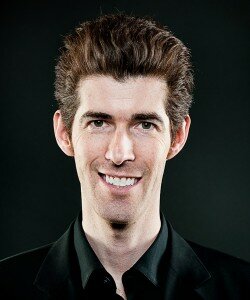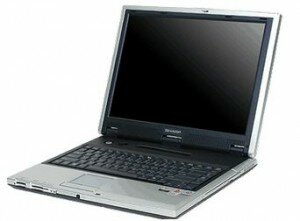DDD Creating Yabazam App for Samsung 3D TVs
 Jay Wiskerchen, Content Manager of Dynamic Digital Depth (DDD), creators of automatic 2D – 3D conversion technology TriDef, announces the company is creating a version of their 3D content portal, Yabazam, for Samsung connected 3DTVs.
Jay Wiskerchen, Content Manager of Dynamic Digital Depth (DDD), creators of automatic 2D – 3D conversion technology TriDef, announces the company is creating a version of their 3D content portal, Yabazam, for Samsung connected 3DTVs.
 DDD was founded in Perth, Australia in 1993. The company’s research into 2D to 3D conversion and 3D display technology was commercialised in 2003 when DDD licensed its TriDef 3D suite of software to Sharp for deployment on its 3D laptop PC – the Sharp glasses free 3D Actius RD3D. That’s right – way back in 2003 before the current 3D boom, there was a laptop on the market that converted 2D video into 3D and displayed it on a glasses free 3D screen (although the processing power in those days couldn’t quite deliver a compelling experience according to CNET).
DDD was founded in Perth, Australia in 1993. The company’s research into 2D to 3D conversion and 3D display technology was commercialised in 2003 when DDD licensed its TriDef 3D suite of software to Sharp for deployment on its 3D laptop PC – the Sharp glasses free 3D Actius RD3D. That’s right – way back in 2003 before the current 3D boom, there was a laptop on the market that converted 2D video into 3D and displayed it on a glasses free 3D screen (although the processing power in those days couldn’t quite deliver a compelling experience according to CNET).
DDD have come a long way since then. The company’s 2D-3D TriDef solution has been licensed to mobile phone manufactures, PC makers and 3DTV makers such  as Samsung and LG. It is DDD’s TriDef software is behind the technology that converts 2D photos, games and videos in the LG Optimus 3D handsets. Samsung also incorporate DDD’s technology into all its 3D TVs for real time 2D – 3D conversion.
as Samsung and LG. It is DDD’s TriDef software is behind the technology that converts 2D photos, games and videos in the LG Optimus 3D handsets. Samsung also incorporate DDD’s technology into all its 3D TVs for real time 2D – 3D conversion.
DDD also operate a low cost 2D to 3D conversion system called 3D Factory aimed at TV broadcasters who want to back convert their catalogue. CBS recently used 3D Factory to test convert some of their programming and Jay confirms that the company has been trialling conversion for UK broadcasters too.
In this exclusive interview, Jay Wiskerchen explains more about the company’s plans as it continues to explore the commercial opportunities of 3D.
3D Focus: Give us an overview of the business.
Just to give you a very brief overview of DDD we are divided up into three different areas. The first area is the licensing of our technology, automatic conversion, which we provide for consumer electronics companies. That can be included into chips, FPGA boards and also into software such as 3D notebooks and all-in-one PCs. The second part of DDD is content distribution. We acquire distribution rights to stereo footage and we sell that via yabazam.com plus we also bundle that content on consumer devices that we are currently licensing our technology too. The third part is content conversion, so we have a service called the 3D Factory which is focused on converting large amounts of content and providing that to the content owners for broadcast distribution.
3D Focus: I understand that DDD offer a 2D – 3D conversion service for just $10,000 per hour. Many people reading are likely to be very pessimistic about that.
Jay Wiskerchen:That's right. It's based on volume, so assuming we get at-least 500 hours of content then the cost per 3D hour is about $10,000.
3D Focus: The natural question is that if conversion usually costs up to $100,000 for a minute, how can you deliver a quality service based around that price point? We interviewed 3D Eye Solutions last year and they were cheap at $30,000 per hour!
Jay Wiskerchen: It's really based on years of research and a lot of time and effort on figuring out how to automatically extract depth information. Some of that technology is used in what we currently licence to the manufacturers which is automatic 2D to 3D conversion. We've taken some of those tools and applied it to a workflow for 3D Factory. We can very quickly generate depth maps from 2D content as it's fed into the system then once we have that an operator will sit down and go scene-by-scene to fine tune the 3D, such as to adjust the focal point, the amount of separation and just make sure it has the look and feel of what the content should be like. Where we save the majority of the time is in the depth extraction. A lot of companies out there doing conversion for cinema, do frame by frame rotoscoping, or they re-create objects onto screen by creating 3D models, so we have automated most of that process and we've found that it results in a very acceptable 3D viewing experience.
3D Focus: What kind clients are you getting for The 3D Factory? It was reported that DDD have been converting some on the CBS back catalogue.
Jay Wiskerchen: I still can't comment on CBS. As for the type of clients that have approached us, we have done 3D conversion tests for all of the US broadcasters, most of the Hollywood studios, and a handful of Korean and UK broadcasters.
3D Focus: DDD supplied the 3D conversion technology behind the Sharp Actius RD3D and AL3D came out in 2004, and, in 3D terms, that was a millennium ago. How advanced as a company have you got with conversion now.
Jay Wiskerchen: Quite a bit more than the Sharp RD3D! That was version one. We are currently on version 3.5. That had more rudimentary conversion; we did not have as much processing power to use so we could only do so many things with 2D video. As processing power has improved we've got the scope to utilise additional methods using motion vectors, and using more algorithms at the same time to identify and track objects throughout the scene.
3D Focus: Let's talk about yabazam.com now. It was launched some time ago now but how successful has it been so far? Is there a demand for 3D content delivered via the Internet?
Jay Wiskerchen: We successfully launched that mainly targeted towards users of the Acer 3D notebook that came out in 2009. The sales are dependent on how many 3D computer devices are out there so to date that is a minority compared to the number of 3D TVs out there. We've seen a moderate level of sales but we've recognised today that the volume today is in 3D televisions so we very soon want to be porting that over to the television platform so those users can enjoy yabazam.com content on their connected 3D TVs.
3D Focus: Can you reveal more about DDD’s connected 3D TV plans?
Jay Wiskerchen: As you know TV manufacturers would love to see more content out there because that helps drive hardware sales. So we have been approached by a handful of TV manufacturers. We have a great relationship with Samsung and have started creating a Yabazam TV app for the Samsung platform.
3D Focus: What sort of deals do you work towards with 3D content creators/owners?
Jay Wiskerchen: The first thing we do is review the content because right now Yabazam is focused on premium content, not user generated content like you would find on YouTube so assuming the material and 3D looks good, and the quality matches the other content on Yabazam then we sign a content distribution agreement. It's a revenue share, and it's pretty much 50/50.
The majority of our agreements have been exclusive for digital distribution. We mainly require exclusive rights because we have access to bundling that content with millions of consumer devices. If you are going to spend the time and effort bundling that content with all of these devices or dropped in the box with TVs you want to make sure that we are not competing against a bunch of other people trying to sell to the same customer. The content owners we do have exclusive deals benefit from us working harder to get the content bundled on 3D blu-ray discs and maximise the distribution for it.

3D Focus: Is that what you have done with Safety Geeks 3D? Is this the first time you've taken Yabazam 3D content and sold it on Blu-ray in traditional retail outlets?
Jay Wiskerchen: That's right. Safety Geeks will be the first 3D Blu-ray disc that we officially publish. We took our time. Last year we saw the first tools that came out for 3D authoring, 3D encoding; that's when the first official titles got in the retail market, and then earlier this year we started working not the authoring tools and looking at the titles that we want to put out there.
Safety Geeks 3D is a great niche because it is more like independent television, it's not like a Hollywood 3D movie that's coming out on discs so we thought it would be a great title to first put out.
3D Focus: What is your TriDef 3D mobile Android and what is your relationship with AMD?
The automatic 2D to 3D conversion software for the PC platform. The TriDef technology that is on the Android platform allows you to do automatic 2D to 3D photo conversion, video conversion and it is also working with some games right now.

3D Focus: Do you see you business as needing to be internationally focused to survive?
Up until maybe six months ago we were very focused in getting content that we could sell in north-America. It was all English speaking shorts and movies. Yet as the rest of the world has kind of caught up with sales of 3D televisions we are looking at providing more local content whether that's for the Korean or China market. For us Yabazam definitely has to be international – to be able to accept international payments and also to have localised content for those different regions.
![]()
DDD website
Information about 3D Factory
Direct link to Yabazam 3D movie portal
Safety Geeks portal
FREE WEEKLY 3D NEWS BULLETIN –




















Pingback: 3D Focus: DDD Creating Yabazam App for Samsung 3D TVs | DDD